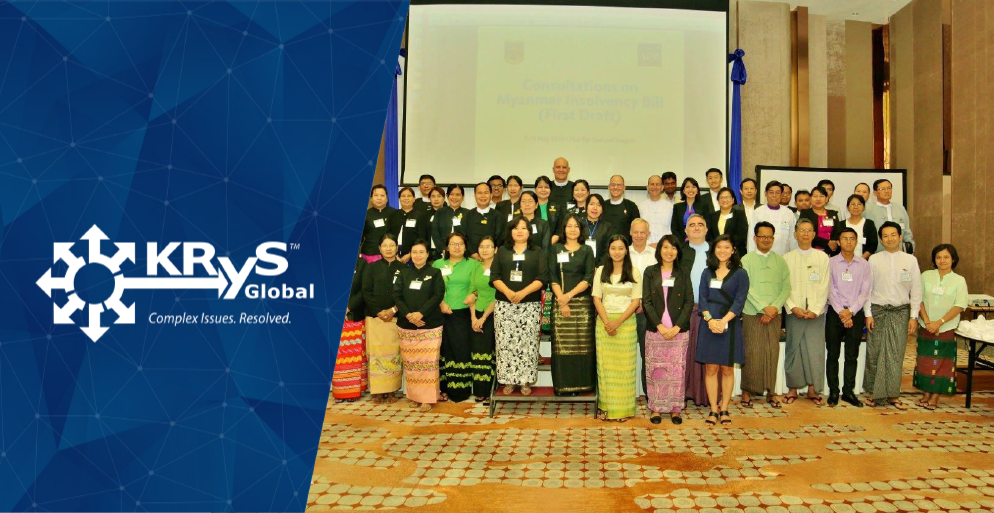Myanmar set to adopt new insolvency laws including a corporate rescue procedure

Photo from Bruno Arboit
The Republic of the Union of Myanmar moved a step closer to the adoption of new insolvency and restructuring laws with public consultations for the proposed laws recently taking place in Nay Pyi Taw and Yangon. It is proposed that the new laws will be finalised and put before Parliament in the latter part of 2018 and enacted in 2019.
The initiative has been driven by the Asian Development Bank (ADB).1
Background
Myanmar is transitioning from over 50 years of military rule and a centrally planned economy towards a free market economy.
As a common law jurisdiction, Myanmar’s existing corporate insolvency laws are set out in the Myanmar Companies Act 1914, which essentially reproduces 19th century British insolvency laws. In many respects the existing insolvency regime is outdated.
A new insolvency system is required to encourage the greater availability of credit and provide a more effective means of dealing with financial distress and failure.
The new law has been developed over the course of a number of in-country visits by the ADB team, working in conjunction with a number of Myanmar government bodies including the Union Supreme Court.
Myanmar has a population of approximately 54 million, but is characterised by a significant income gap. Recent reforms and developments carried out by the new government, in collaboration with foreign countries and organisations has fuelled economic growth and a growing consumer middle class. However, over 80% of the country’s enterprises still comprise micro and small to medium enterprises (“MSMEs”) with less than 10 employees. Accordingly, the new insolvency laws have been designed to cater for the specific characteristics of the Myanmar legal and commercial environment, including MSMEs.
Key features of proposed new Insolvency Law
The new law is based on common law tradition but reflects modern international best practice. It will cater for both corporate and personal insolvency, including specific provisions for MSMEs.
Companies and MSMEs in financial distress will have the option of following the traditional liquidation route or alternatively opting for rehabilitation proceedings while enjoying a moratorium from legal proceedings. Among other things, the rehabilitation proceeding provides for the appointment of an insolvency practitioner as a Rehabilitation Manager to oversee the company. It is the responsibility of the Rehabilitation Manager to prepare a rehabilitation plan for the company, to be approved by creditors within 3 months (which may be extended) of appointment. The objective of the rehabilitation plan is to rescue the company as a going concern. However, if this is not possible, then to ensure that there is a better result for creditors than under a liquidation.
The rehabilitation proceedings may be commenced by the company itself, a secured creditor or the Court. During the course of the rehabilitation, the Rehabilitation Manager assumes personal liability for debts of the company incurred during the process. Secured creditors are barred from enforcing their security without permission of the Court or the Rehabilitation Manager.
A liquidation may be commenced voluntarily by the company, by order of the Court or automatically following the failure of a rehabilitation plan. The proposed test for insolvency is a “cash flow” test. A company’s insolvency will be presumed if it fails to comply with a statutory demand within 21 days of service.
MSMEs
The law defines an MSME as a company whose debts are less than 10 million Kyats (approximately US$7,500) or an individual or partnership whose debts are more than 1 million Kyats (US$750).
The proposed law provides for a simplified and less expensive rehabilitation process for MSMEs but is otherwise generally consistent with the rescue provisions that apply to companies.
The proprietors of an MSME may appoint a Rehabilitation Adviser. However, the MSME proprietors/directors remain in control and the role of the Rehabilitation Advisor is simply to advise. The Rehabilitation Adviser is not personally liable for the debts of the MSME.
Personal Insolvency
Aside from formal bankruptcy, the draft law encourages debtors to reach voluntary arrangements with their creditors both before and after an individual is declared bankrupt.
As in Hong Kong, voluntary arrangements will entail a debtor submitting a proposal to a nominated insolvency practitioner who will review and report on the proposal and, if appropriate, seek the approval of creditors. The arrangement is subject to judicial review.
The draft law provides for a term of 3 years for the duration of a debtor’s bankruptcy, upon which the bankrupt will be automatically discharged unless the trustee obtains an order extending the administration.
The Model Law on Cross Border Insolvency
Myanmar’s existing laws make no provision for cross border insolvency. Accordingly, the draft law includes adoption of the model law as a means of encouraging foreign investment and to facilitate international insolvencies that have an element in Myanmar.
Conclusion
Adoption of new insolvency laws modelled on international best practice principles will no doubt assist in the economic development of Myanmar. However, the country will still need to address a number of other related issues including the capacity of the existing legal system and the shortage of experienced insolvency professionals.
Bruno Arboit
KRyS Global Hong Kong
_____________________________
[1] The ADB advisory team consists of:
- Patricia Rhee and Nicholas Moller of the ADB
- Scott Atkins, John Martin and Rodney Bretag of Norton Rose Fulbright Sydney office
- Melinda Tun and Khin Thandar
- Bruno Arboit of KRyS Global Hong Kong
